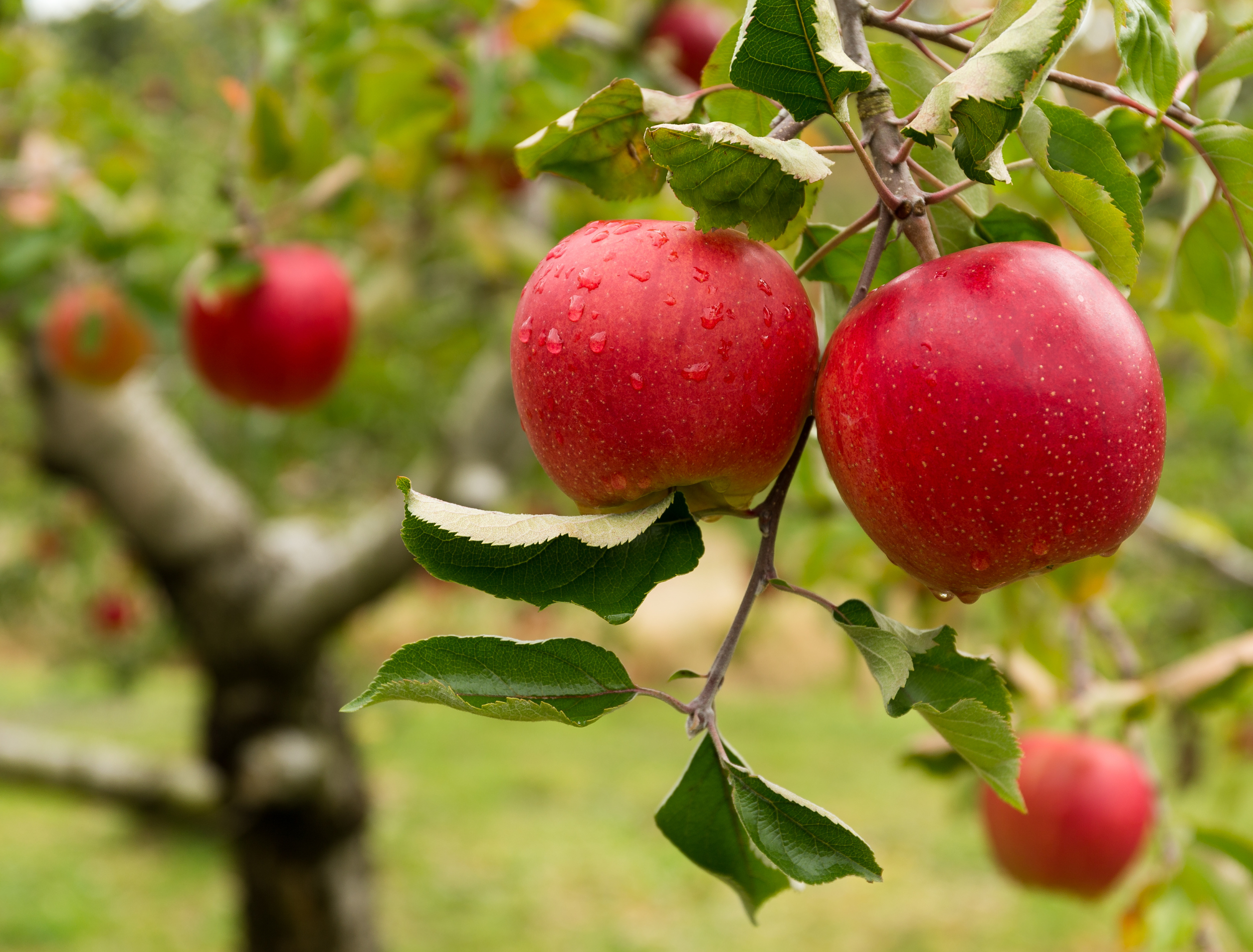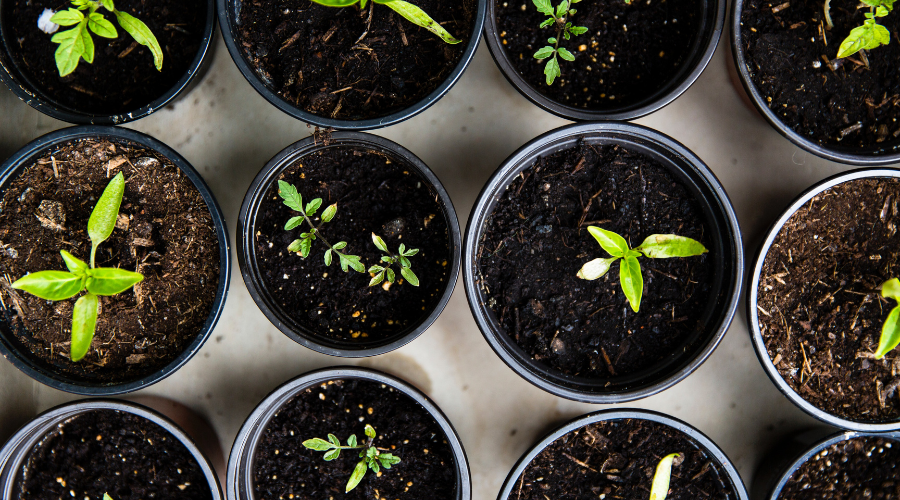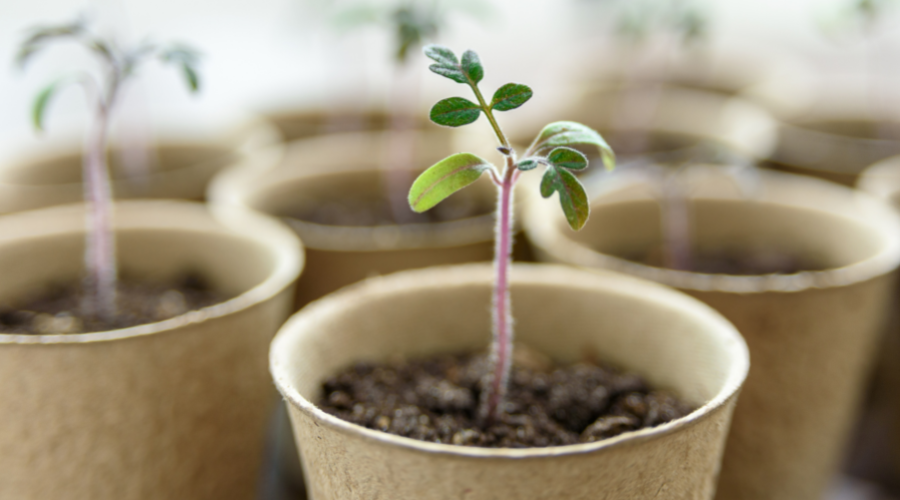Among all of the fruit trees you can grow, apple trees are one of the best choices for many reasons. First, apples are a part of a healthy diet, and you can prepare countless delicious meals with them.
Even though growing apples can take some time, it doesn’t mean you should get discouraged, especially since this task doesn't require a lot of effort!
In this guide, we will share how to plant an apple tree, help it grow, and harvest apples. We will also share the most important facts you need to know during this process.
What You Will Need to Plant an Apple Tree
- Apple tree seedlings
- Paper towels
- Water
- A sealed bag or container
- Soil
- Small pots (4 inches deep)
- Fertilizer
- Pesticide
- Gardening tools
Apple Tree Seedlings
Image credit: Markus Spiske via Unsplash
There are numerous online vendors and gardening stores where you can buy apple tree seedlings. When picking out your seedlings, consult this Plant Hardiness Zone Map to make sure that the apple tree you want will prosper in your specific climate. Test your soil to make sure it has the proper pH for the kind of apples you want to grow.
Pick out two kinds of seeds. Apple trees grow better near other apple tree because they benefit from cross-pollination. It is best that the second tree is a different kind of apple and that it grows at the same rate as the first tree.
An alternative to buying apple seeds is using some from the core of a store-bought apple. To do this, choose a couple of apples you want to grow, enjoy their flesh for snack time, and then remove their seeds. Make sure you clean the seeds, getting all the apple juices and bits off of them.
The apple trees that grow from these seeds may produce apples different than the ones that the seeds came from.
Easiest Apple Trees to Grow in Your Backyard
Image credits: Slatan via Canva
Lodi Apples
These apple trees produce fruit earlier in the season. They grow to be anywhere from 10-25 feet tall. Lodi Apple Trees are more durable than other apple trees and can handle numerous kinds of soils.
Gravenstein
Gravenstein apples can prosper in numerous zones across the country. This tree is notable for being one of the earliest apple trees to bloom, taking less time to produce fruit. The apples this tree produces are great for cooking. The tree can grow to be 15- 20 feet tall.
Honeycrisp
These delicious apples can grow in numerous climates. This tree is fairly manageable for a backyard, only growing to be about 15 feet tall. Honeycrisps are regularly recognized for being one of the best apples you can buy. The US Apple Association declared them one of the top five most grown apples in America.
Northern Spy
This hardy apple can withstand the cold more than most others. It even keeps its leaves far into the winter, past the first frost. However, it requires frequent work and pruning, which can be challenging since it grows about 25 feet tall.
Red Rome
This is one of the fastest-growing apple trees. It can be droopy, and its fruit can be hard, so it is better to eat Red Rome apples cooked instead of raw. This tree is a semi-dwarf apple tree, only growing to be about 10-14 feet tall.
Gala Dwarf
This dwarf tree grows about 8-12 feet tall. You probably have tried Gala apples, they are extremely common in grocery stores, but fresh-grown ones are much sweeter in flavor.
These trees are conveniently self-pollinating, so they do not need a companion tree, although a companion tree will help with their fruit quality. This is important because they have poor disease and pest resistance abilities.
Granny Smith Dwarf
Everyone knows about granny smiths! These dwarf trees grow to be a very manageable 8-12 feet tall. These apples are perfect for eating raw or cooked. Granny Smith trees do not need a companion tree because they self-pollinate, although, again, fruit quality improves with one.
If you don’t want to take care of a full-fledged apple tree, consider growing a Bonsai Apple Tree.
Apple Tree Fertilizers
Image credits: Arthon meekodong via Canva
Potassium
Potassium is a great fertilizer for apple trees because they need a lot of potassium to produce their fruit. By fertilizing with potassium, you will ensure that your tree’s fruit is healthy, beautiful, and produced in abundance. Potassium has the additional benefit of protecting buds from frost in the winter.
Calcium
Calcium fertilizer ensures that the fruit from apple trees is hard, crisp, and slow to spoil. Trees without enough calcium will have small, soft, depressions on their fruit. You can apply calcium to your tree by using lime. It even has the bonus of raising soil pH.
Boron
Boron will ensure that your fruit is beautiful. Trees deficient in boron have brown, ugly spots inside apples and dead buds. You only need to apply boron to your tree once every few years.
Nitrogen
Nitrogen is an excellent fertilizer for apple trees! If your apple tree is not producing fruit, it is the only fertilizer you need. Be warned, do not be heavy-handed with the nitrogen if your tree is producing fruit because it will increase the growth of vegetation, which because of competition, could lead to fewer apples growing.
How to Plant an Apple Tree
Step One: Planning for Your Apple Tree
Image credits: dorioconnell via Canva
There are many things to consider before buying apple tree seedlings. You want to be sure whether you want to get them dry or from fruit, whether you want two cross-pollinating trees or one self-pollinating tree, what kind of pesticides you want to use, what kind of fertilizer you want to use, where you want to plant the apple trees, and so on.
That's why it is crucial to create a proper plan first!
Step Two: Preparing Your Seeds
Image credits: Sahil Ghosh via Canva
Make sure your seeds are dry. If they are store-bought, they should be. If not, dry them out on a paper towel. Wrap the seeds in damp paper towels and then put them in a sealed bag or container. You need to refrigerate your seeds for 75 days, keeping them around 45 degrees Fahrenheit. You will need to re-spray the seeds now and then to make sure they stay damp.
Pro Tip: Your fridge is simulating the germination that occurs for apple seeds during winter. If it is winter when you undergo this process, you can just leave the seeds outside.
Step Three: Plant Your Seeds in a Pot
Image credits: pundapanda via Canva
By the end of the 75 days, your seeds should be beginning to sprout. In 4-inch deep pots, spread a soil mix. Then, make divots in the soil that are 1-2 times the size of the seeds. Add the seeds to the soil and gently cover them. Water until the soil is moist.
Step Four: Wait, Watch, and Water
Image credits: Tatyana Aksenova via Canva
Place the pots somewhere where they will get sunlight. Water them frequently, keeping the soil moist. When the plants outgrow their pots, you can move them to bigger pots and wait for them to outgrow those or plant them in your desired apple tree spots.
Pro Tip: You must keep the plants away from creatures and pests at this stage in the process. Keep the pots somewhere safe, like on a windowsill.
Step Five: Transplant the Apple Tree Seedlings
Image credits: Taveesaksri via Canva
Take the seedlings out of their pots and plant them in your desired apple tree locations. The planting spots should have lots of sunlight and be on high ground because low-lying frost can kill apple tree blossoms. If you are planting two trees, they should be at least 15 feet apart.
Remove all weeds near the trees’ spots. Loosen the soil when you plant the trees. The soil should be well-drained but moist. If the soil is not well-drained, the trees may suffer from root rot.
Pro Tip: When choosing a spot for your apple tree, make sure it is one you are not using insecticides near because pollination by bees is great for apple trees.
Step Six: Wait, Water, and Watch for Even Longer
Image credits: intst via Canva
Your trees will continue to grow and, in a few years, will even produce fruit! At some point, you will need to add pesticides because apple trees are prone to diseases and pests.
After a week, you can add fertilizer to your apple trees. Do not add it right when you plant the trees because it could burn their roots.
Water your trees on a consistent and regular basis. Replace mulch around the trees regularly as well. Depending on your tree types, you may eventually need to use a support-post system to keep the trees growing straight. You can prune your trees as they grow to help with their aesthetics and overall growth.
Pro Tip: In the fall, consider moving mulch away from the trees, so pests like mice don’t nest in it and eat the tree roots.
Step Seven: Harvest and Eat Your Apples
Image credits: olga_d via Canva
Finally, your tree has delicious fruit dangling from its branches! Harvest your apples when they are at peak perfection in the Fall.
There are tons of apple recipes to make, including pies, ciders, and salads. Or you can eat them straight from the branches!
You can also easily store apples by wrapping them in newspaper and keeping them in a cold, dark place.
Conclusion
This guide taught you everything you needed to know to use seeds to grow apple trees in your backyard. The hardest part now is choosing which kinds of apples you want to grow; from sweet to sour or tangy, there are so many choices! Just remember that once your apples are ripe for harvesting, be sure to use an apple picking tool.
Did you enjoy this tutorial? Be sure to let us know how this guide worked for you, and remember to share this article if you liked it!











